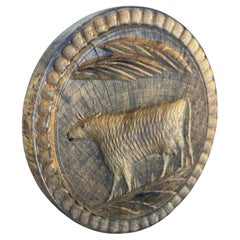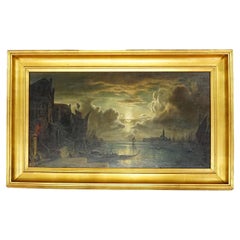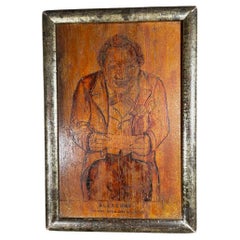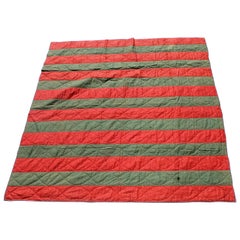19th Century Folk Art
American Adirondack Antique 19th Century Folk Art
Wood
German Victorian Antique 19th Century Folk Art
Canvas, Wood
American Folk Art Antique 19th Century Folk Art
Wood
American Folk Art Antique 19th Century Folk Art
Pine
American Adirondack Antique 19th Century Folk Art
Wood
American Other Antique 19th Century Folk Art
Cotton
Burmese Antique 19th Century Folk Art
Wood, Art Glass, Teak, Giltwood
French Victorian Antique 19th Century Folk Art
Wood
Danish Gustavian Antique 19th Century Folk Art
Wood
American Adirondack Antique 19th Century Folk Art
Linen, Wool
African Folk Art Antique 19th Century Folk Art
Bronze
Swedish Gustavian Antique 19th Century Folk Art
Wood
Nepalese Tribal Antique 19th Century Folk Art
Wood
Scandinavian Mid-Century Modern Antique 19th Century Folk Art
Copper
American Adirondack Antique 19th Century Folk Art
Wood
French Industrial Antique 19th Century Folk Art
Wrought Iron
American Eastlake Antique 19th Century Folk Art
Velvet, Oak
American Folk Art Antique 19th Century Folk Art
Horn, Wool, Wood
Asian Antique 19th Century Folk Art
Bronze
American Adirondack Antique 19th Century Folk Art
Wool, Cotton
Swiss Black Forest Antique 19th Century Folk Art
Walnut
Italian Classical Roman Antique 19th Century Folk Art
Marble
Swiss Black Forest Antique 19th Century Folk Art
Wood
American Folk Art Antique 19th Century Folk Art
Pottery
Burkinabe Tribal Antique 19th Century Folk Art
Brass
American Rustic Antique 19th Century Folk Art
Tin
French French Provincial Antique 19th Century Folk Art
Copper
Swedish Gustavian Antique 19th Century Folk Art
Pine
German Black Forest Antique 19th Century Folk Art
Metal
French Rustic Antique 19th Century Folk Art
Iron
French Antique 19th Century Folk Art
Stoneware
French Victorian Antique 19th Century Folk Art
Fabric, Wood
American Antique 19th Century Folk Art
Wood
American Antique 19th Century Folk Art
Leather
American Antique 19th Century Folk Art
Wool
American Antique 19th Century Folk Art
Brass
American Adirondack Antique 19th Century Folk Art
Pottery
Austrian Folk Art Antique 19th Century Folk Art
Wood
Rustic Antique 19th Century Folk Art
Iron
American Antique 19th Century Folk Art
Iron
German Early Victorian Antique 19th Century Folk Art
Wood, Canvas
French Folk Art Antique 19th Century Folk Art
Pine
Ukrainian Folk Art Antique 19th Century Folk Art
Nutwood
American Industrial Antique 19th Century Folk Art
Iron
English Antique 19th Century Folk Art
Straw
American Folk Art Antique 19th Century Folk Art
Pottery
French Antique 19th Century Folk Art
Fabric, Pine, Paper
American Adirondack Antique 19th Century Folk Art
Cotton, Linen
French Antique 19th Century Folk Art
Stone
Folk Art Antique 19th Century Folk Art
Wrought Iron
Italian Biedermeier Antique 19th Century Folk Art
Wood
Sierra Leonean Tribal Antique 19th Century Folk Art
Stone, Soapstone
Folk Art Antique 19th Century Folk Art
Wood, Bentwood
Norwegian Romantic Antique 19th Century Folk Art
Wood
French Folk Art Antique 19th Century Folk Art
Copper, Iron
American Industrial Antique 19th Century Folk Art
Iron
English Folk Art Antique 19th Century Folk Art
Wool
Italian Early Victorian Antique 19th Century Folk Art
Pine
French Folk Art Antique 19th Century Folk Art
Wood
German Rustic Antique 19th Century Folk Art
Antler, Wood
Read More
A Giant Wedding Cake Has Us Looking at Portuguese Tiles in a New Light
At Waddesdon Manor, artist Joana Vasconcelos has installed a three-tiered patisserie inspired by the narrative tile work of her homeland. We take a look at the cake sculpture and how Portuguese tiles have been used in architecture from the 17th century to today.
Why Jules Chéret Was the King of the Modern Poster
The streets of fin-de-siècle Paris were set aglow with colorful poster ads, thanks to the printing techniques invented by Jules Chéret. Now, the Milwaukee Art Museum is celebrating this undersung talent in America's first solo show dedicated his exuberant works.
Why the American Flag Has Had So Many Different Star Patterns
Expert Jeff Bridgman explains the history and meaning behind the twinkling constellations that have graced Old Glory.
Peggy Guggenheim Loved Modernism, but She Also Collected Tribal Art
The iconoclastic style setter displayed African and Oceanic art, as well as works by indigenous peoples of the Americas, alongside pieces by such major modernists as Pablo Picasso and Jackson Pollock.
The 13-Star American Flag Had More Variations Than You’d Think
Perfect for July 4th weekend, a new show at Philadelphia's Museum of the American Revolution displays an array of antique red, white and blue flags.
Tramp Art, America’s Most Misunderstood Art Form, Is Trending in Interiors
Designers are beginning to see this enigmatic form of folk art in a whole new light.





